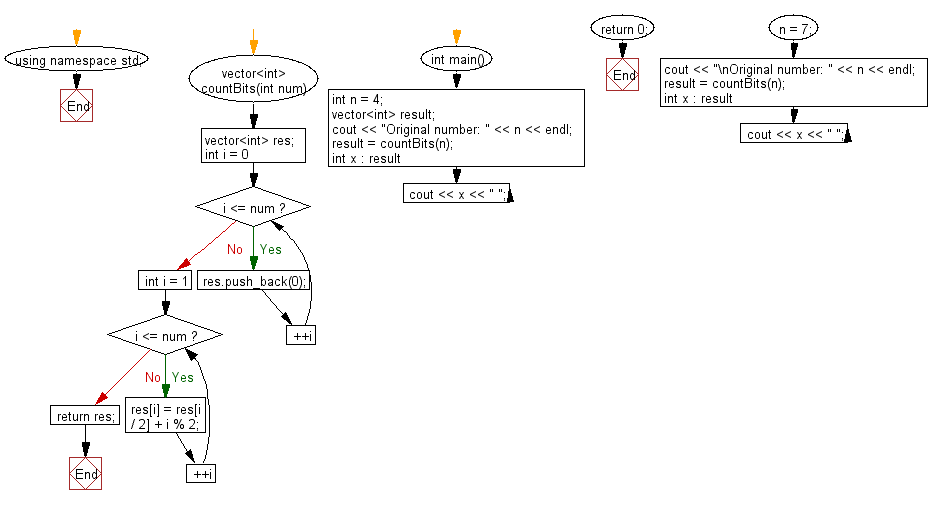C++ Exercises: Calculate the number of 1's in their binary representation and return them as an array
C++ Math: Exercise-13 with Solution
For a non negative integer in the range 0 ≤ i ≤ n write a C++ programming to calculate the number of 1's in their binary representation and return them as an array.
Input: 9
Output: true
Input: 81
Output: true
Input: 45
Output: false
Sample Solution:
C++ Code :
#include <iostream>
#include <vector>
using namespace std;
vector countBits(int num) {
vector res;
for (int i = 0; i <= num; ++i) {
res.push_back(0);
}
for (int i = 1; i <= num; ++i) {
res[i] = res[i / 2] + i % 2;
}
return res;
}
int main()
{
int n = 4;
vector result;
cout << "Original number: " << n << endl;
result = countBits(n);
for (int x : result)
cout << x << " ";
n = 7;
cout << "\nOriginal number: " << n << endl;
result = countBits(n);
for (int x : result)
cout << x << " ";
return 0;
}
Sample Output:
Original number: 4 0 1 1 2 1 Original number: 7 0 1 1 2 1 2 2 3
Flowchart:

C++ Code Editor:
Contribute your code and comments through Disqus.
Previous: Write a C++ programming to check if a given integer is a power of three or not.
Next: Write a C++ programming to get the maximum product from a given integer after breaking the integer into the sum of at least two positive integers.
What is the difficulty level of this exercise?
